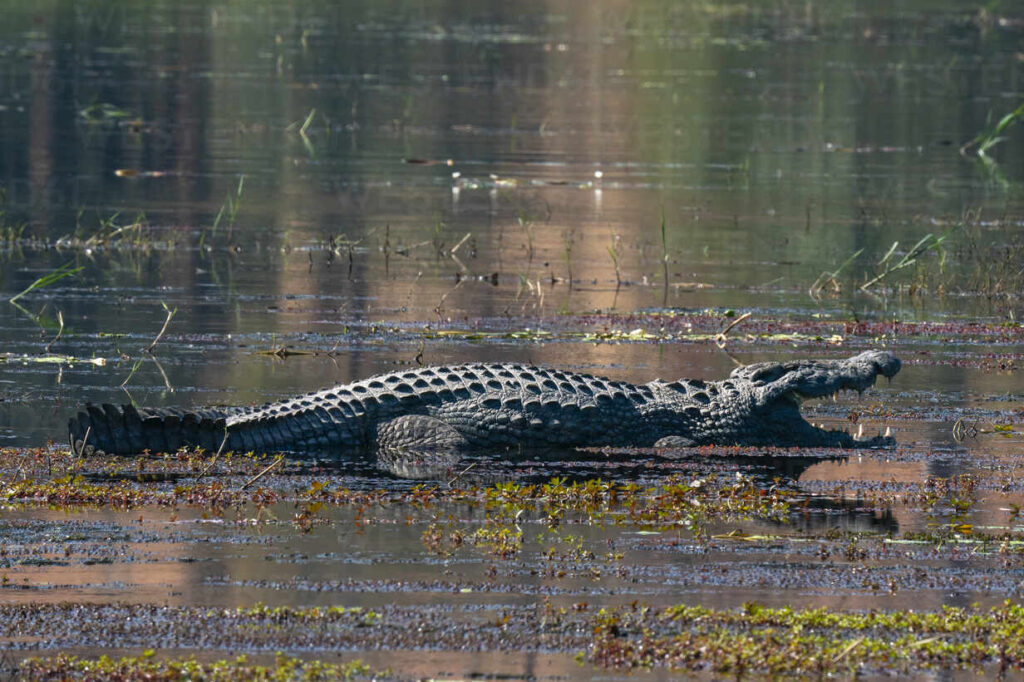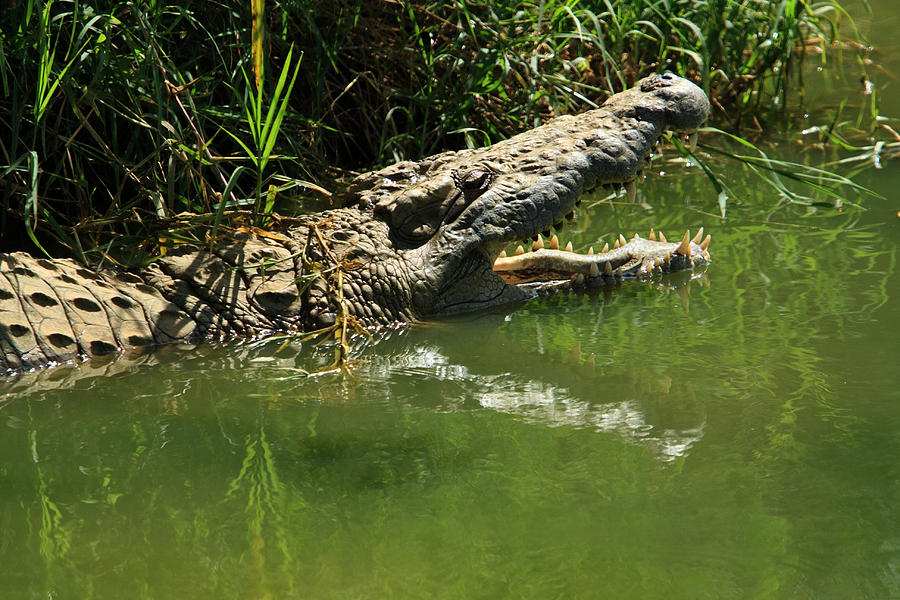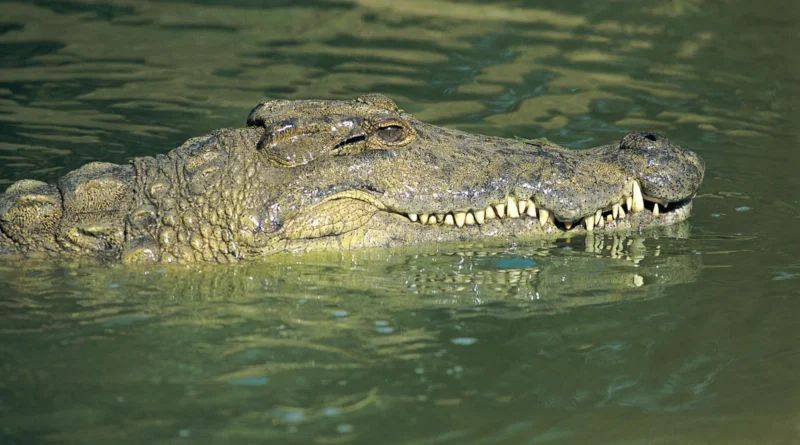Nile Crocodile Wetlands
Introduction
Nile Crocodile Wetlands Wetlands are among the most ecologically productive and biologically diverse ecosystems on Earth, providing essential services to both humans and wildlife. For Nile crocodiles (Crocodylus niloticus), these wetlands serve as critical habitats that support their life cycle and play a crucial role in maintaining the balance of aquatic ecosystems. Spanning much of sub-Saharan Africa, Nile crocodile wetlands range from expansive river floodplains and marshes to smaller, ephemeral ponds that come to life during the rainy season. These habitats not only support the survival and reproduction of Nile crocodiles but also contribute to the health and stability of the entire ecosystem. This article delves into the unique characteristics of Nile crocodile wetlands, their ecological importance, threats to their integrity, and the conservation strategies needed to protect these vital habitats.
Characteristics of Nile Crocodile Wetlands
Nile crocodiles are found in a wide variety of wetland habitats, from slow-moving rivers and lakes to marshes, estuarine environments, and seasonal floodplains. These habitats offer the ideal conditions for Nile crocodiles, including stable water levels, abundant prey, and suitable areas for basking and nesting. Depending on the season and the availability of resources, Nile crocodiles may move between different wetland types, demonstrating their adaptability and resilience.

- Riverine and Floodplain Wetlands
Riverine wetlands are characterized by their proximity to flowing water bodies such as rivers and streams. These wetlands often form extensive floodplains during the rainy season, creating a mosaic of interconnected ponds, swamps, and marshes. The annual flooding cycle brings fresh nutrients and supports a diverse array of aquatic plants and animals, providing an ideal environment for Nile crocodiles. Floodplain wetlands are particularly important for crocodiles as they offer ample prey and secluded nesting sites, where females can lay and incubate their eggs. - Permanent and Seasonal Lakes
Nile crocodiles are commonly found in both permanent and seasonal lakes, where they establish territories along the shoreline. Permanent lakes provide a stable habitat throughout the year, while seasonal lakes, which fill up only during the rainy season, offer temporary refuges and breeding sites. The presence of fish, amphibians, and other aquatic species in these lakes ensures a steady food supply for crocodiles of all ages. - Marshes and Swamps
Marshes and swamps are characterized by slow-moving or stagnant water, often with dense vegetation such as reeds and papyrus. These habitats are crucial for juvenile crocodiles, which find shelter among the thick vegetation, away from potential predators. Adult crocodiles also use marshes for basking and ambushing prey, making these wetlands an essential component of the crocodiles’ range. - Estuarine Wetlands
Although Nile crocodiles are primarily freshwater species, they are known to inhabit estuarine environments where rivers meet the sea. These brackish wetlands offer a unique mix of freshwater and saltwater, and crocodiles here have adapted to tolerate varying salinity levels. Estuarine wetlands are important for providing connectivity between freshwater and coastal habitats, allowing crocodiles to access different areas depending on resource availability.
Ecological Importance of Nile Crocodile Wetlands
Nile crocodile wetlands are ecologically significant for several reasons. They serve as biodiversity hotspots, support the livelihoods of local communities, and provide critical ecosystem services such as water filtration, flood control, and carbon storage.

- Biodiversity Hotspots
Wetlands are among the most biodiverse ecosystems, supporting a wide variety of plants, fish, amphibians, birds, and mammals. Nile crocodiles are apex predators within these habitats, regulating prey populations and preventing the overabundance of certain species. Their presence helps maintain the balance of food webs and ensures the health of the entire ecosystem. Additionally, Nile crocodile nesting sites contribute to the creation of microhabitats, which provide shelter and breeding grounds for other species such as fish and small mammals. - Water Quality and Hydrological Function
Wetlands play a critical role in maintaining water quality and hydrological function. They act as natural filters, trapping sediments, pollutants, and excess nutrients from upstream sources. This filtration process ensures that water entering downstream rivers and lakes is cleaner, benefiting both wildlife and human communities. Nile crocodiles contribute to these processes by influencing the distribution of aquatic vegetation and the structure of wetland habitats through their movements and feeding behavior. - Flood Control and Groundwater Recharge
Wetlands serve as natural buffers against flooding by absorbing excess rainwater and reducing the intensity of floods. During dry periods, they release stored water slowly, maintaining base flow in rivers and preventing downstream areas from drying out completely. This ability to moderate water flow is essential for the survival of Nile crocodiles, which rely on stable water levels for hunting, breeding, and nesting. - Carbon Sequestration and Climate Regulation
Wetlands are significant carbon sinks, storing large amounts of carbon in their vegetation and soils. By sequestering carbon, wetlands help mitigate the effects of climate change and regulate local and global temperatures. Protecting Nile crocodile wetlands not only supports the species’ survival but also contributes to broader climate change mitigation efforts.
Threats to Nile Crocodile Wetlands
Despite their ecological importance, Nile crocodile wetlands face numerous threats that jeopardize their integrity and functionality. The primary threats include habitat destruction, pollution, climate change, and unsustainable water management practices.
- Habitat Destruction and Land Conversion
Wetlands are often considered wastelands and are drained or filled for agricultural expansion, urban development, and infrastructure projects. This destruction reduces the availability of critical habitats for Nile crocodiles and fragments their populations. Loss of wetlands also eliminates the ecosystem services they provide, such as flood control and water purification. - Pollution and Water Quality Degradation
Agricultural runoff, industrial waste, and untreated sewage are major sources of pollution that degrade wetland water quality. Pollutants such as pesticides, heavy metals, and excess nutrients can harm aquatic life and disrupt the food web. Nile crocodiles are particularly vulnerable to pollution because toxins accumulate in their prey, leading to bioaccumulation and potential health issues. - Climate Change and Altered Hydrological Cycles
Climate change alters precipitation patterns, leading to changes in wetland hydrology. Prolonged droughts can dry up wetlands, while extreme rainfall can cause excessive flooding, disrupting the natural balance of these ecosystems. Such changes threaten the availability of suitable habitats for Nile crocodiles and affect their reproductive success. - Unsustainable Water Management
Dams, water diversion projects, and excessive water extraction for agriculture or industry can alter the natural flow of rivers, impacting the wetlands they support. Reduced water flow can lead to the shrinkage of wetlands, loss of connectivity between habitats, and decreased availability of prey for Nile crocodiles.
Conservation Strategies for Nile Crocodile Wetlands
Protecting Nile crocodile wetlands requires a holistic approach that addresses both the direct and indirect threats to these habitats. Conservation strategies should focus on habitat protection, sustainable water management, community engagement, and research.

- Establishment and Management of Protected Areas
Creating protected areas and reserves that encompass key wetland habitats is essential for the conservation of Nile crocodiles. Effective management of these areas should include regular monitoring, habitat restoration, and enforcement of regulations to prevent illegal activities such as land conversion and pollution. - Sustainable Water Management Policies
Implementing sustainable water management practices is crucial for maintaining wetland hydrology. Policies should regulate water extraction, ensure environmental flow requirements, and promote practices that minimize the impact of dams and water diversion projects. Restoring natural water flow regimes can help rehabilitate degraded wetlands and support the recovery of Nile crocodile populations. - Community-Based Conservation Initiatives
Engaging local communities in wetland conservation can enhance the effectiveness of conservation efforts. Community-based initiatives that promote sustainable land use, reduce pollution, and mitigate human-wildlife conflict are key to protecting Nile crocodile habitats. Education and awareness programs can also foster a sense of stewardship and appreciation for the ecological value of wetlands. - Research and Monitoring Programs
Continued research and monitoring are vital for understanding the status of Nile crocodile populations and their wetland habitats. Studies on habitat use, population dynamics, and the effects of climate change can inform management decisions and conservation strategies. Monitoring programs should track changes in wetland health and identify emerging threats, enabling timely interventions.
Conclusion
Nile crocodile wetlands are invaluable ecosystems that support a wide range of biodiversity and provide critical services to both wildlife and human communities. Protecting these habitats is essential for the long-term survival of Nile crocodiles and the health of the broader environment. Conservation strategies must address the root causes of wetland degradation and promote sustainable practices that benefit both people and wildlife. By safeguarding Nile crocodile wetlands, we not only ensure the continued existence of this iconic species but also preserve the natural heritage and ecological integrity of Africa’s wetlands for future generations.
